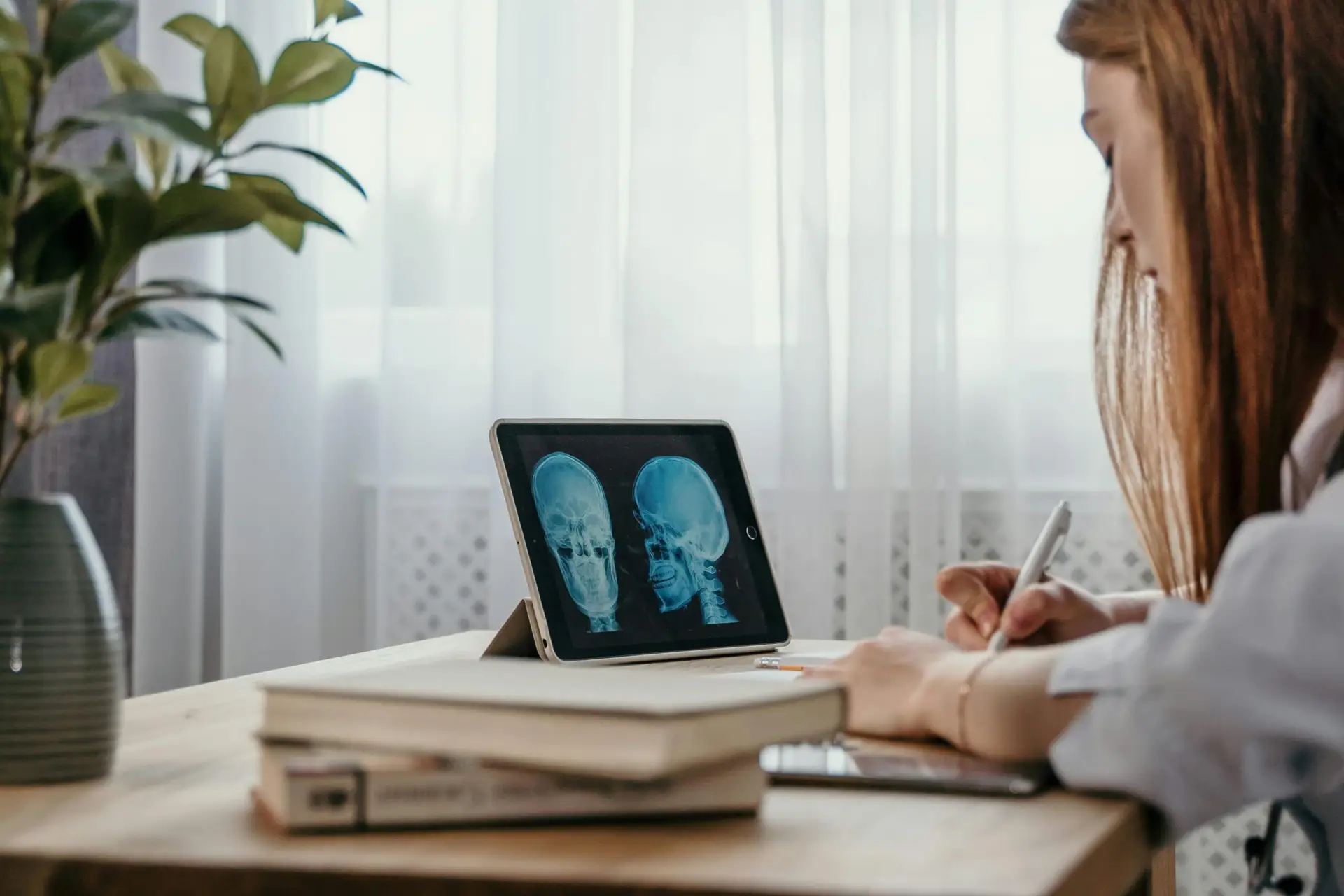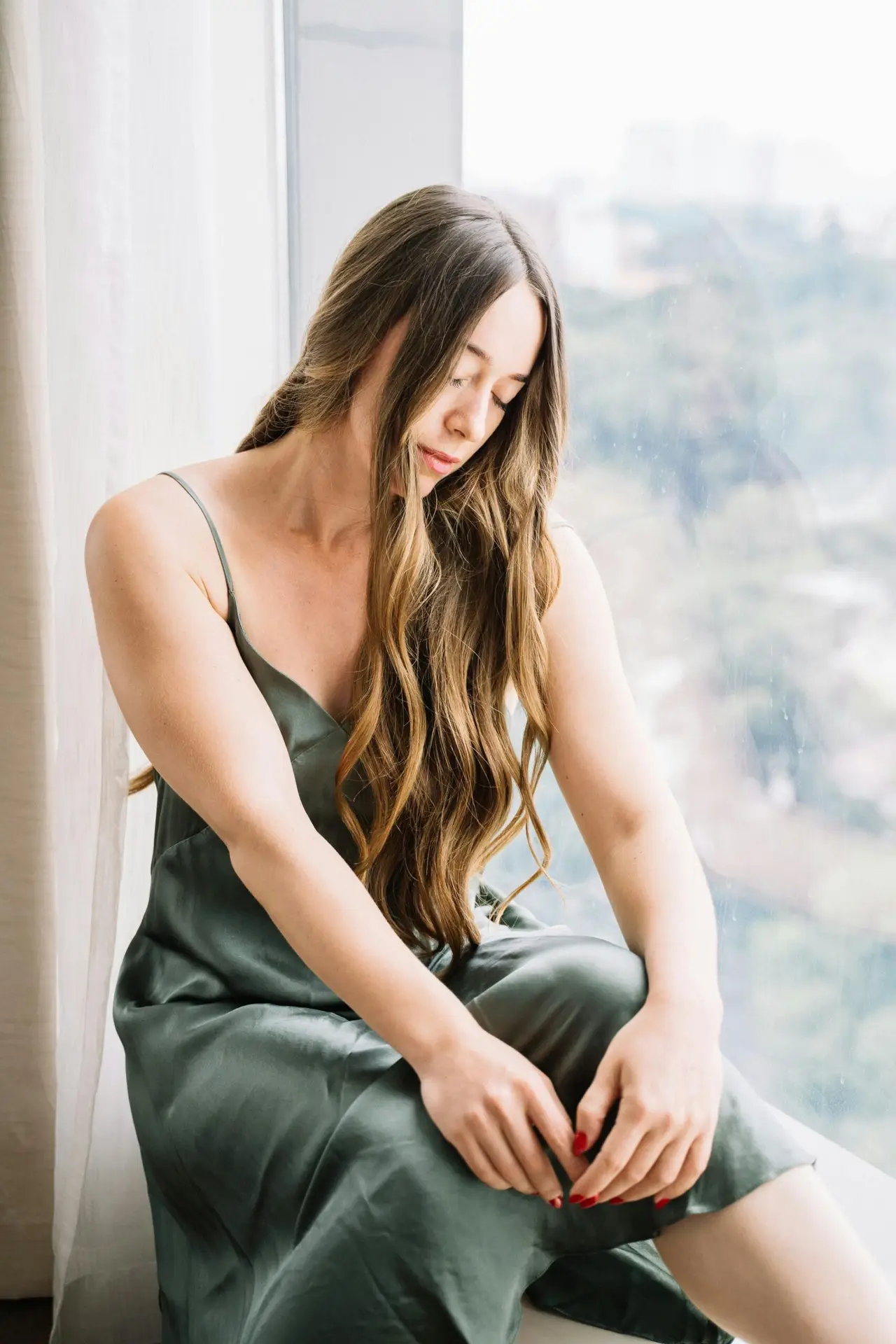
Introduction to Upper Cervical Chiropractic : Why Technique Matters—And Why the Goal Matters Even More
Upper Cervical Chiropractic Techniques: If you’ve been researching upper cervical chiropractic, you’ve probably run into a dozen technique names that sound mysterious: Knee Chest, Blair, NUCCA, Orthospinology, Grostic, Advanced Orthogonal, Atlas Orthogonal, EPIC, Toggle Recoil, and QSM3. It can feel like alphabet soup.
Here’s the reassuring truth: while each method has its own analysis style and adjustment approach, all reputable upper cervical chiropractic techniques share the same purpose—restore the delicate alignment of the upper neck (the atlas C1 and axis C2), calm the nervous system, and re-establish clear communication between the brain and body. When that communication improves, your body’s ability to self-regulate improves, and stubborn symptoms—migraines, vertigo, dizziness, TMJ, POTS-like dysautonomia, occipital neuralgia, post-concussion issues, and even chronic neck or low back pain—often begin to change.
At Lavender Family Chiropractic in Sarasota, our doctors—Dr. Rusty Lavender, Dr. Jacob Temple, and Dr. Will Guzinski—specialize in Knee Chest Upper Cervical care with very light, precise corrections. There’s no twisting, yanking, or popping. Instead, we combine 3D CBCT imaging with functional nervous system scans (Tytron paraspinal infrared thermography) to identify subtle misalignments and nervous system irritation. Our goal is simple and steadfast: make a small, accurate correction that your body can accept and hold—so you can heal.
Below, you’ll find a comprehensive, easy-to-understand guide to the leading upper cervical techniques, how they differ, how they agree, and how our Sarasota team helps you determine the best path forward.
Upper Cervical Chiropractic Techniques 101: The Atlas, the Axis, and Your Autonomic Nervous System
Your head weighs roughly 10–12 pounds and balances on the atlas (C1) like a bowling ball perched on a ring. C1 and C2 are uniquely designed for motion and precision—not brute strength. The brainstem lives just above this area, and numerous nerves, blood vessels, and cerebrospinal fluid (CSF) pathways pass through. A small shift here can have a big ripple effect:
- Neurological irritation: Misalignment may trigger abnormal input to the brainstem and autonomic nervous system, leading to headaches, migraine activity, dizziness/vertigo, neck pain, facial/jaw pain, and “fight-or-flight” patterns (poor sleep, anxiety, GI irregularities, or POTS-like symptoms).
- Muscle imbalance & posture: If your head tilts even slightly, your body compensates: one shoulder may rise, hips can rotate, and one leg can appear shorter. That postural distortion stresses the spine from top to bottom—often felt as neck pain, mid-back tension, or chronic low back flare-ups.
- Fluid dynamics: Upper cervical alignment may influence venous/CSF flow. When mechanics improve, pressure-related symptoms (head pressure, ear fullness, sensitivity to barometric changes) can settle.
All upper cervical techniques exist to analyze these relationships and perform the lightest possible correction to restore balance.
Shared Philosophy Across Techniques: Precision Over Force
While the analysis tools vary—x-rays vs. CBCT, thermography patterns, leg checks, posture scans, or instrument vectors—the philosophy is consistent:
- Measure first. Never guess. Use imaging and scans to map the unique way your atlas/axis misalign.
- Correct specifically. Apply a precise vector with minimal force—just enough to influence the joints, ligaments, and neurology.
- Let the body hold. A great correction is one your body can hold between visits. Fewer, better corrections beat frequent, forceful manipulation.
- Verify results. Re-scan or re-image as needed. Monitor posture, balance, and symptoms over time.
Now, let’s look at what makes each technique distinctive—and how they converge on the same outcome.
Knee Chest Upper Cervical
What it is: Patients are positioned comfortably with the chest supported and head gently flexed, so the upper cervical spine is exposed in a safe, stable posture. The doctor uses detailed imaging (in our office, 3D CBCT) to determine a precise vector of correction and delivers a very quick, gentle impulse to the atlas or axis.
Why people love it: The setup allows for exceptional specificity. The adjustment is brief and feather-light—no twisting, no cracking. Many patients feel profound changes in posture, clarity, or pressure within minutes or hours.
Ideal for: Migraines, vertigo (including BPPV-like symptoms, vestibular migraines, and MdDS-type complaints), head/neck pressure, TMJ, occipital neuralgia, post-concussion issues, and stubborn neck pain that never seems to resolve elsewhere.
How we verify: At Lavender Family Chiropractic, we combine Tytron thermography (to check for nerve heat asymmetry) and postural analysis with follow-up checks to ensure the correction is holding. If it holds, we don’t re-adjust—we let your body heal.
Blair Upper Cervical
Core idea: The Blair method customizes imaging to each patient’s unique anatomy. Rather than assuming standard angles, Blair uses specialized protracto x-rays (and can be adapted with advanced imaging) to visualize misalignment along the exact joint planes of your atlas and axis. Adjustments can be manual or instrument-assisted, always with a specific vector.
Experience: Very light, very precise, with gentle head-piece adjustments. Postural checks, leg-balance checks, and neurological indicators help determine if/when to re-adjust.
Overlap with others: Like Knee Chest, Blair emphasizes patient-specific vectors and minimal force. The biggest distinction is its custom imaging protocol to find the true misalignment pathway.
NUCCA (National Upper Cervical Chiropractic Association)
Core idea: NUCCA uses detailed radiographic analysis and a signature postural approach to gently reposition the atlas. The adjustment involves a sustained, low-force contact on the side of the upper neck, often perceived by patients as a firm, delicate pressure—far from a thrust or twist.
Experience: No cracking or popping. The session may include pre- and post-posture measurements and repeated checks to ensure the correction is seated.
Overlap: NUCCA is famous for “holding is healing.” Just like Knee Chest and Blair, NUCCA corrections are designed to be rare and durable—quality over quantity.
Orthospinology
Core idea: Orthospinology evolved from the original Grostic work. It uses precise x-ray analysis to determine atlas misalignment and delivers a very gentle instrument-assisted correction—often with a handheld adjusting stylus that creates a controlled, light percussion or pressure along a calculated vector.
Experience: Patients feel little more than a tap or light impulse. Follow-up measurements confirm success before any additional correction is considered.
Overlap: Like others, Orthospinology aims to restore alignment with minimal force and verify objectively.
Grostic Procedure
Core idea: Grostic is one of the historical foundations of modern upper cervical work and strongly influenced NUCCA and Orthospinology. It uses meticulous x-ray analysis to define angles and vectors for the atlas, guiding a highly controlled, low-force correction that patients often barely feel.
Experience: Extremely gentle. Emphasis on analysis, pre/post checks, and long-term stability of the correction.
Overlap: Shares the same DNA as NUCCA and Orthospinology: specific, light, and verified.
Advanced Orthogonal
Core idea: Built on Atlas Orthogonal/Grostic concepts, Advanced Orthogonal uses instrument-delivered corrections guided by precise imaging and mathematical vector analysis. The goal is to deliver an orthogonal (square/neutral) relationship between skull and atlas with minimal force.
Experience: A nearly imperceptible tap via a specialized instrument. Patients often marvel that something so light can produce changes in balance, pressure, or pain.
Overlap: Heavy on math and imaging, light on force—same global purpose as the rest.
Atlas Orthogonal (AO)
Core idea: AO uses a percussion-style instrument to deliver a gentle correction to the atlas. The setup includes very specific headpiece positioning and a stylus calibrated to your unique vector. The intent is to gently nudge the atlas back toward neutral, improving neurological tone and posture.
Experience: No twisting or cracking. Many describe a soft “tap.”
Overlap: AO and Advanced Orthogonal are close cousins, each emphasizing precision instrumentation and minimal force.
EPIC (Evolutionary Percussive Instrument Corrections)
Core idea: EPIC refines the percussive instrument approach with modern imaging and software-guided vectors. The whole model focuses on extreme accuracy across all three planes of motion, with a percussive impulse designed to be both gentle and profoundly specific.
Experience: A subtle percussive impulse—often less intense than what you’d imagine—yet highly targeted.
Overlap: Shares the same spirit as AO/Advanced Orthogonal with updated tools and analysis.
Toggle Recoil (HIO)
Core idea: One of the earliest upper cervical techniques, Toggle Recoil uses a quick, light thrust followed immediately by a relaxation (the “recoil”). It’s a deft, shallow impulse—very different from general spinal manipulation—and targets the atlas/axis with a precise line of drive.
Experience: Faster than many instrument approaches but still exceptionally gentle. The thrust is tiny and specific—no twisting.
Overlap: Modern Knee Chest methods evolved from the HIO lineage, blending classic principles with updated imaging and analysis.
QSM3 (Quantum Spinal Mechanics 3)
Core idea: QSM3 emerged from NUCCA concepts with broader attention to global postural integration. The method looks beyond the atlas to consider how the entire body adapts. Corrections are gentle, rhythmic, and tailored to unwind global tension patterns while guiding the head-neck relationship back toward neutral.
Experience: Soft contacts and subtle body cueing. Emphasis on posture and tension release, not force.
Overlap: Same destination—neurological balance and efficient posture—through a whole-body lens.
Same Destination, Different Roads: How These Techniques Compare
- Imaging & analysis: Blair customizes to joint planes; NUCCA/Grostic/Orthospinology/AO/Advanced Orthogonal/EPIC rely on mathematical vectors; Knee Chest integrates imaging (we use 3D CBCT) with posture and thermography; QSM3 focuses on postural unwinding.
- Method of correction: Some are instrument-assisted (AO, Advanced Orthogonal, Orthospinology, EPIC). Others are manual but ultra-specific (Knee Chest, Blair, NUCCA, Toggle). QSM3 uses gentle, sustained contacts and global postural strategies.
- Force profile: All are low-force relative to general manipulation. None require twisting or torquing the neck.
- Frequency of adjustments: The aim is fewer, better corrections. When your body holds, we don’t chase it—we let healing happen.
The “best” technique is the one that fits your anatomy, your nervous system, and your goals—measured and verified by objective checks.
How Lavender Family Chiropractic Chooses the Right Approach (And Why We Lead With Knee Chest)
At Lavender Family Chiropractic in Sarasota, our team uses a measure-correct-re-measure process:
- History & Neuro Exam: We listen to your story—migraines, vertigo, TMJ, ear fullness, barometric-pressure sensitivity, brain fog, post-concussion symptoms, neck/low back pain, POTS-type complaints—and perform orthopedic and neurological testing.
- 3D CBCT Imaging: We utilize state-of-the-art 3D CBCT imaging to visualize your atlas/axis from multiple angles with extraordinary clarity. This lets us plan the most conservative, specific correction.
- Functional Nervous System Scans (Tytron): We run paraspinal infrared thermography to identify heat asymmetries that often correlate with autonomic imbalance. These scans also help us determine whether you need a correction on any given day.
- Knee Chest Upper Cervical Correction: We prefer Knee Chest because it allows unparalleled specificity and a very light, precise vector. There’s no twisting, yanking, or popping. It’s quick—yet intentionally conservative.
- Hold Strategy: If your scans and checks show you’re holding, we do not re-adjust. Holding is healing. We’ll support you with postural guidance, hydration and sleep tips, and gentle lifestyle changes to stabilize your correction.
- Re-checks & Progress: We periodically reassess. As you hold longer, visit frequency usually decreases.
While our clinical lane is Knee Chest, our doctors are educated about the broader upper cervical landscape. If an external referral or co-management is clearly in your best interest, we’ll make that recommendation.
Who Benefits from Upper Cervical Care?
Patients often seek us for:
- Migraines & headaches: Hormonal, vestibular, tension-type, “weather-triggered,” or “mystery migraines.”
- Vertigo & balance issues: BPPV-like dizziness, vestibular migraine, Meniere’s, MdDS-type symptoms, chronic disequilibrium, motion sensitivity.
- Ear-related complaints: Eustachian tube dysfunction, ear fullness/crackling/popping, sensitivity to barometric pressure changes.
- Neck pain & TMJ: Cervicogenic headaches, jaw pain, clicking, clenching, face pain.
- Post-concussion & whiplash: Head pressure, brain fog, light/noise sensitivity, neck pain after accidents—even if the accident was months or years ago.
- Neuralgias & neuropathic pain: Occipital neuralgia, trigeminal neuralgia-like facial pain patterns.
- Dysautonomia-style symptoms: POTS-like lightheadedness, temperature sensitivity, GI motility swings, sleep disruption, anxiety spikes—often tied to upper cervical stress.
- Low back pain & sciatica: When the head isn’t centered, the body compensates—from neck to pelvis to feet. Correcting the top can settle the bottom.
Patients frequently come to us after trying medications, general chiropractic, PT, or vestibular therapy. Our approach doesn’t replace those options; it addresses the missing link—upper cervical neuro-mechanics—so the rest of your health strategies can finally “stick.”
What a First Visit Looks Like in Our Sarasota Clinic
- Warm, thorough intake: We listen. Your symptoms matter, but so does your story—onset, triggers, what’s helped, what hasn’t, what you’re afraid of, and what you hope to regain.
- Objective testing: Orthopedic/neurological exam, posture analysis, and Tytron thermography baseline scans.
- 3D CBCT: This is our difference-maker. CBCT gives us a clear roadmap and the confidence to adjust lightly.
- Report of findings: We’ll show you exactly what we see and outline a conservative plan, including frequency, expected milestones, and how we’ll measure success.
- First correction (if indicated): A Knee Chest adjustment that is brief, specific, and gentle. You won’t be twisted or popped.
- Post-checks: We re-scan to verify the effect. If your body shows signs of holding, we let it hold.
Why “Light and Precise” Beats “Hard and Frequent”
Imagine moving a fine mechanical watch. You don’t smack it—you nudge it. The upper cervical spine is that watch. When the vector is right, the force can be minimal. When the force is minimal, your body is more likely to accept and hold the change. That’s when symptoms taper and resilience grows between visits.
Real-World Changes Patients Report
While results vary, common wins include: fewer and less severe migraines; steadier balance; reduced ear fullness and pressure sensitivity; clearer thinking and calmer sleep; less jaw clenching; and neck/low back relief that lasts longer between flare-ups. Most importantly, patients often feel more in control—less at the mercy of weather, certain foods, or random “bad days.”
Top 15 FAQs About Upper Cervical Chiropractic Techniques
1) Are all upper cervical techniques basically trying to do the same thing?
Yes. Whether it’s Knee Chest, Blair, NUCCA, Orthospinology, Grostic, Advanced Orthogonal, Atlas Orthogonal, EPIC, Toggle Recoil, or QSM3, the shared goal is to restore a precise alignment at C1/C2, calm the nervous system, and improve posture and fluid dynamics with minimal force.
2) Which technique is “best”?
The “best” technique is the one that works best for your anatomy and your nervous system—verified with objective checks. At Lavender Family Chiropractic, we prefer Knee Chest because it lets us combine 3D CBCT and Tytron with an ultra-specific, light correction. But we respect—and often collaborate with—other upper cervical approaches.
3) Will you twist or crack my neck?
No. Our corrections are gentle and precise with no twisting, yanking, or popping. Many patients are surprised by how light the adjustment feels.
4) How do you decide if I need an adjustment on a given day?
We use Tytron thermography, posture checks, and motion/neuro indicators. If you’re holding your correction, we don’t re-adjust. Protecting the hold is how you heal.
5) Do you use x-rays or MRI?
We use 3D CBCT for upper cervical imaging because it provides exceptional detail and helps us minimize force. We may collaborate with your medical team regarding MRI when appropriate.
6) Can upper cervical care help migraines and vertigo?
Many migraine and dizziness patterns are linked to upper cervical stress. By improving mechanics and neurological balance, patients frequently report fewer migraines, steadier balance, less ear fullness, and improved tolerance to barometric pressure. Individual results vary, but the outcomes can be life-changing.
7) What about TMJ, neck pain, occipital neuralgia, or brain fog?
These are common in our office. When the atlas/axis is aligned, jaw tension often eases, neck muscles balance, neural irritation calms, and head pressure/brain fog may reduce.
8) How many visits will I need?
It depends on the chronicity of your problem, your lifestyle, and how well you hold. We’ll outline a plan after we review your CBCT and baseline scans—and we’ll adjust only when indicated.
9) Will I feel relief right away?
Some notice changes within hours; others take days or weeks as the nervous system unwinds. We monitor objective markers (thermography, posture) alongside your symptoms to ensure you’re trending in the right direction.
10) Is it safe for kids and seniors?
Yes. Upper cervical corrections are extremely light, making them ideal for children, teens, adults, and seniors—even those with arthritis or spinal fusions (with proper imaging and clinical judgment).
11) What if I’ve already tried physical therapy or vestibular therapy?
Great—those can be complementary. We address the upper cervical foundation so other therapies have a better chance to “stick.”
12) Do you crack or twist the neck in Knee Chest?
No. Knee Chest is a precise, quick impulse with no twisting or popping. Patients usually describe it as surprisingly gentle.
13) Do you take insurance?
Our office is out of network with insurance. Many of our patients receive a superbill to submit to their insurance for reimbursement based on their coverage. We offer many different payment options as well as finance options.
14) How long is the first visit?
Plan for enough time to complete history, exam, Tytron scans, and 3D CBCT. We’ll give you a clear plan and, if indicated, a first correction the same day or at your follow-up.
15) Why choose a Sarasota clinic if I live in Bradenton, Lakewood Ranch, or Palmetto?
Because specialization matters. Our doctors focus on upper cervical work every day and use CBCT + Tytron to guide light, precise Knee Chest corrections. We routinely care for patients from Bradenton, Parrish, Lakewood Ranch, Ellenton, Venice, Osprey, Punta Gorda, St. Petersburg, Siesta Key, Longboat Key, Lido Key, and Myakka City.
What Makes Lavender Family Chiropractic Different
- Specialization: We live and breathe upper cervical.
- 3D CBCT: Imaging that supports the lightest effective correction.
- Tytron Thermography: Objective nervous system checks guide when (and if) we adjust.
- Knee Chest Precision: A minimal-force approach—no twisting, yanking, or popping.
- “Hold” Philosophy: We don’t chase adjustments. We protect your alignment so you can heal.
- Team-Based Care: Dr. Rusty Lavender, Dr. Jacob Temple, and Dr. Will Guzinski collaborate to ensure your plan stays precise and personal.
- Encouraging Environment: You’re not a case file—you’re a person. Our team celebrates your wins, problem-solves setbacks, and communicates clearly.
Your First Steps—And What to Expect Over Time
- Schedule a consultation: We’ll make sure your case is a match for upper cervical care.
- Imaging & baseline scans: We collect the data we need to be conservative and effective.
- First correction (if indicated): A gentle Knee Chest adjustment with post checks.
- Stabilization phase: We focus on helping you hold—hydration, sleep hygiene, gentle movement, stress management, and ergonomic tweaks.
- Reassess & graduate: As your visits spread out, you’ll know how to protect your gains and return for tune-ups only when needed.
Who We Serve
Although our clinic is in Sarasota, we welcome patients from Bradenton, Parrish, Lakewood Ranch, Ellenton, Venice, Osprey, Punta Gorda, St. Petersburg, Siesta Key, Longboat Key, Lido Key, and Myakka City. If you’ve been searching “upper cervical chiropractor near me,” “chiropractor Sarasota Florida,” “chiropractor near me,” “Vertigo doctor near me,” or “Migraine doctor near me,” our team would be honored to evaluate your case.
Final Word: Techniques Differ—The Destination Is the Same
Knee Chest, Blair, NUCCA, Orthospinology, Grostic, Advanced Orthogonal, Atlas Orthogonal, EPIC, Toggle Recoil, and QSM3 can look different on the surface. But they’re all dedicated to the same mission: restore upper cervical alignment with the least force necessary, quiet the nervous system, and give your body the best chance to heal. At Lavender Family Chiropractic, our Knee Chest approach—supported by 3D CBCT and Tytron thermography—exists to make that process as clear, gentle, and effective as possible.
If you’re ready for a plan that values precision over force and holding over chasing, we’re ready to help.
Call to Action—Start Your Upper Cervical Journey Today
Lavender Family Chiropractic
Address: 5899 Whitfield Ave Ste 107, Sarasota, FL 34243
Phone:
Website: www.chiropractorsarasotaflorida.com
Lavender Family Chiropractic in Sarasota Florida offers complimentary consultations to learn more about you. Click the link below!
https://intake.chirohd.com/new-patient-scheduling/724/lavender-family-chiropractic
Visit our Website!
To learn more about us go to http://www.chiropractorsarasotaflorida.com
We also service Bradenton, Parrish, Ellenton, Ruskin, Venice, Tampa, St. Pete, Osprey, Longboat, Lakewood Ranch, Myakka City.
If you are in Tampa, Fort Myers, or Salt Lake City, you can visit my other locations! NeckWise Upper Cervical. Visit, www.neckwise.com
If you are not local, visit www.uccnearme.com to find a doctor in your area.
Serving Sarasota, Bradenton, Lakewood Ranch, Parrish, Ellenton, Venice, Osprey, Punta Gorda, St. Petersburg, Siesta Key, Longboat Key, Lido Key, and Myakka City.
Schedule your consultation today. Let’s restore your alignment, calm your nervous system, and help you get your life back—with light, precise, upper cervical chiropractic care.



